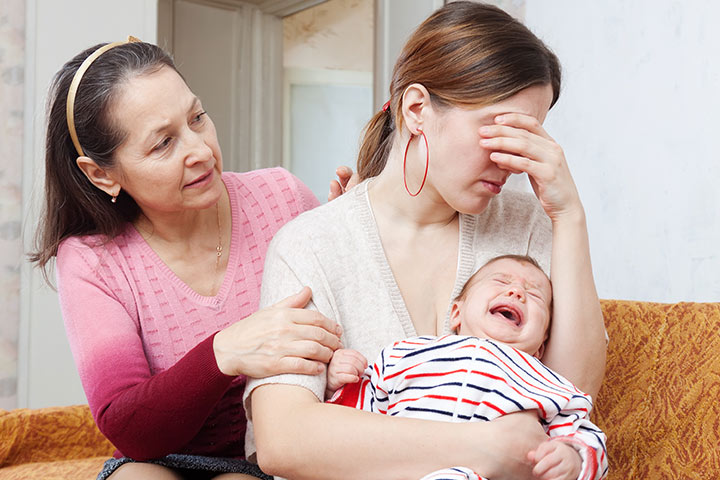
Image: Shutterstock
Babies are extremely delicate soon after birth. If they required care and precaution when they were in the womb, then this precaution almost doubles up after birth. Because any amount of aggressive handling or negligence can cause serious injuries to the baby. Worse, it can also prove fatal in some cases. Thus, parents need to keep themselves aware of all things that can cause harm to their babies. Today, we are going to discuss a syndrome which can prove fatal for your baby if necessary precautions are not taken while handling them. It is Shaken Baby Syndrome.
Shaken Baby Syndrome (SBS)
Shaken Baby Syndrome is a serious kind of injury inflicted on a baby or a toddler. It is known by other names like shaken impact syndrome or inflicted head injury. It usually happens when a caregiver or even parents violently shake the baby out of frustration or anger because the baby wouldn’t stop crying.
A baby’s neck muscles are very weak and underdeveloped. It cannot support a baby’s proportionately large head. Thus, when a baby’s head is shaken back and forth violently, it can result in serious, and at times fatal head injury. And if this is interrupted with the baby’s head hitting a surface, it causes serious brain damage which can also lead to coma or death.
Shaken Baby Syndrome is, however, preventable if proper care and precaution are taken. If either of the parents is a risk to the child’s well-being, help and counseling are often provided to them. Even caregivers are can be educated about the dangers of Shaken Baby Syndrome (1).
Symptoms Of Shaken Baby Syndrome
If a baby has suffered any kind of trauma to the head or neck due to violent shaking, quite often you might not find any external marks of injury. However, you can look for certain signs or symptoms such as these:
- Extreme irritability and fussiness
- Difficulty in staying awake
- Problems in breathing
- Poor feeding or eating
- Vomiting
- Bluish or pale skin
- Seizures or fits
- Paralysis
- Coma
Although internal injuries might not be seen, there could be facial bruises that can hint at violence. In certain mild cases of shaken baby syndrome, a baby might appear normal after the violent episode. But later on, he/she can demonstrate health issues or behavioral problems (2).
Prevalence Of Shaken Baby Syndrome
Reported cases of Shaken Baby Syndrome usually occurred in children who were less than 2 years of age, with a majority of them occurring well before a child’s first birthday. On average, most victims of this syndrome have been between 3 to 8 months of age. However, there have been cases where children up to four years of age have also been victims of this syndrome. This is largely due to incidences of domestic abuse at homes, mostly at the hands of the fathers or the mother’s boyfriends. In some cases, women caregivers and mothers have also been found to be the perpetrators (3).
PREVENTION
Shaken Baby Syndrome is often a result of the impatience and frustration of parents, especially fathers while calming down a crying baby. Sometimes, incidences of domestic violence at home or substance abuse by one of the parents or caregivers can also lead to the occurrence of Shaken Baby Syndrome.
New parents are given classes on ways of soothing a baby. Caregivers can also be trained to handle babies gently. Those with a family history of drug abuse or domestic violence can inform their doctors beforehand so they can arrange necessary help in the form of counselors or legal assistance. It also helps to keep immediate family members in the loop about the situation.
Crying is a natural way of communication for babies until they start talking. And incessant crying often means the baby is suffering from some sort of discomfort. If you are unable to handle the baby, take the help of a family member or reach out to your doctor or nearest hospital for a checkup. But don’t endanger the life of the little one who you took so many pains to bring into this world!
















